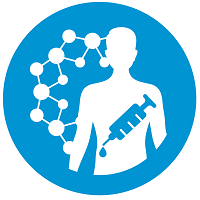Preclinical, Clinical, and Translational Sciences
Symposium: Clinical Trials for Pediatric Populations
The Effect of Formulation Excipients for Oral Absorption in Pediatrics
Tuesday, November 11, 2025
10:30 AM - 11:00 AM CT
Location: 225 CD

Kazuki Matsui, PhD (he/him/his)
Scientist
Ono Pharmaceutical, Osaka, Japan
Speaker(s)
Pharmaceutical excipients are generally considered inactive by definition, however the reality is that some of them may have considerable impact on in vivo drug performances (i.e. pharmacokinetics). Sugar alcohols, such as mannitol and sorbitol, are among the most commonly used pharmaceutical excipients in oral dosage forms. Despite their widespread use, these sugar alcohols are known to exert osmotic effects within the gastrointestinal tract, which can result in the impaired bioavailability of concomitant drugs. This osmolarity-mediated “drug-excipient interaction” is particularly significant in pediatric populations, who often prefer "bulky formulations" containing large amounts of sugar alcohols.
In this presentation, we will explore the biopharmaceutics aspects of sugar alcohols, focusing on their mechanisms of action, clinical evidence, and implications for pediatric polypharmacy. Furthermore, the latest strategies to predict and mitigate these interactions through the use of physiologically-based biopharmaceutics modeling (PBBM) will be introduced. This approach facilitates model-informed decision-making in formulation development and clinical trial design, offering a robust framework to address the challenges posed by osmolarity-mediated interactions in pediatric drug development.
In this presentation, we will explore the biopharmaceutics aspects of sugar alcohols, focusing on their mechanisms of action, clinical evidence, and implications for pediatric polypharmacy. Furthermore, the latest strategies to predict and mitigate these interactions through the use of physiologically-based biopharmaceutics modeling (PBBM) will be introduced. This approach facilitates model-informed decision-making in formulation development and clinical trial design, offering a robust framework to address the challenges posed by osmolarity-mediated interactions in pediatric drug development.
Learning Objectives:
- Understand mechanisms by which osmotically active excipients (e.g., mannitol, sorbitol) impaire oral drug absorption
- Acquire knowledge of clinical evidence supporting osmolarity-mediated “drug-excipient interactions” in pediatric populations
- Learn pathways for predicting and mitigating these interactions through biopharmaceutics approaches
- Discuss ideas for enabling patient-centricity in drug product development and optimizing the clinical use of medicines

